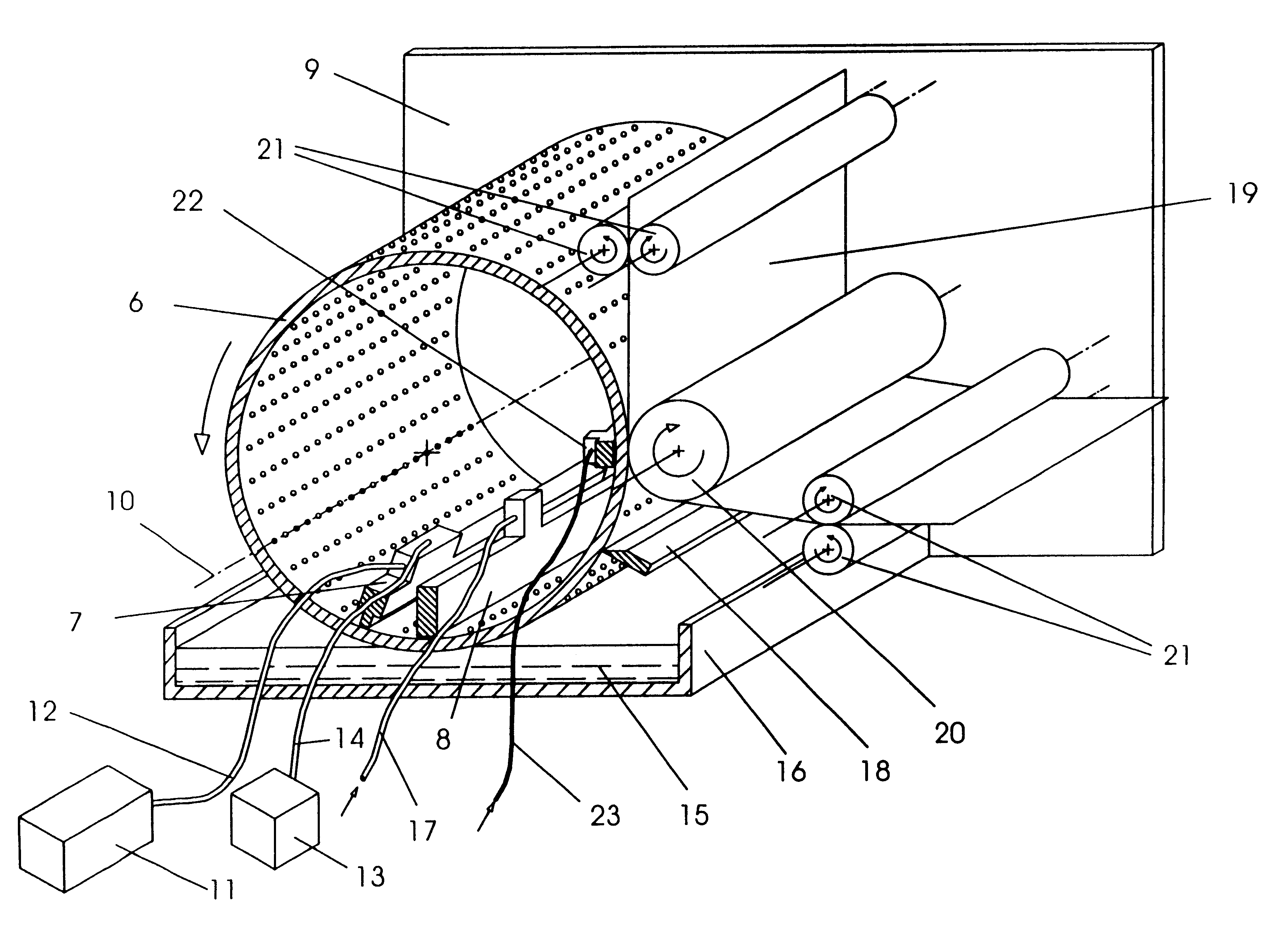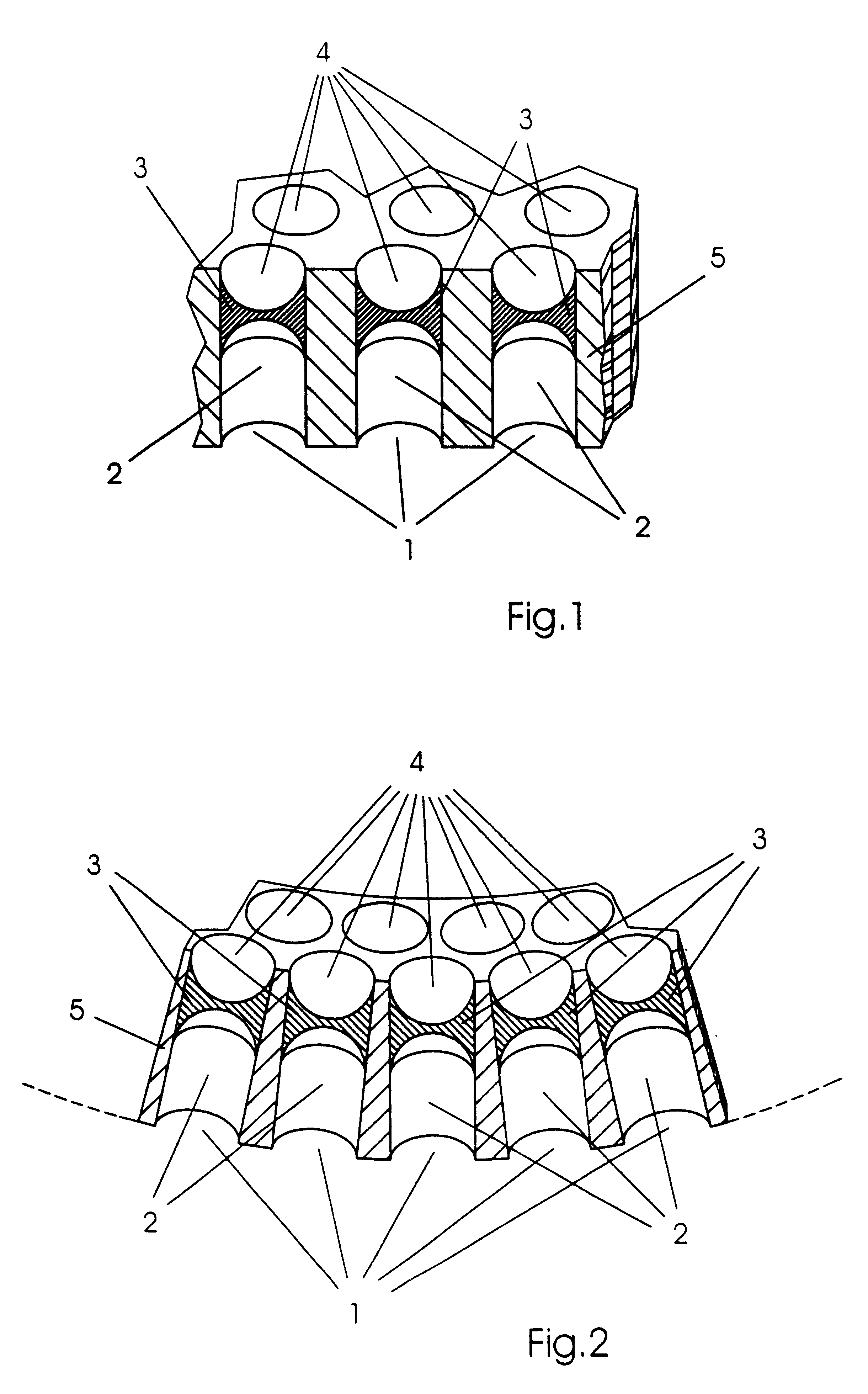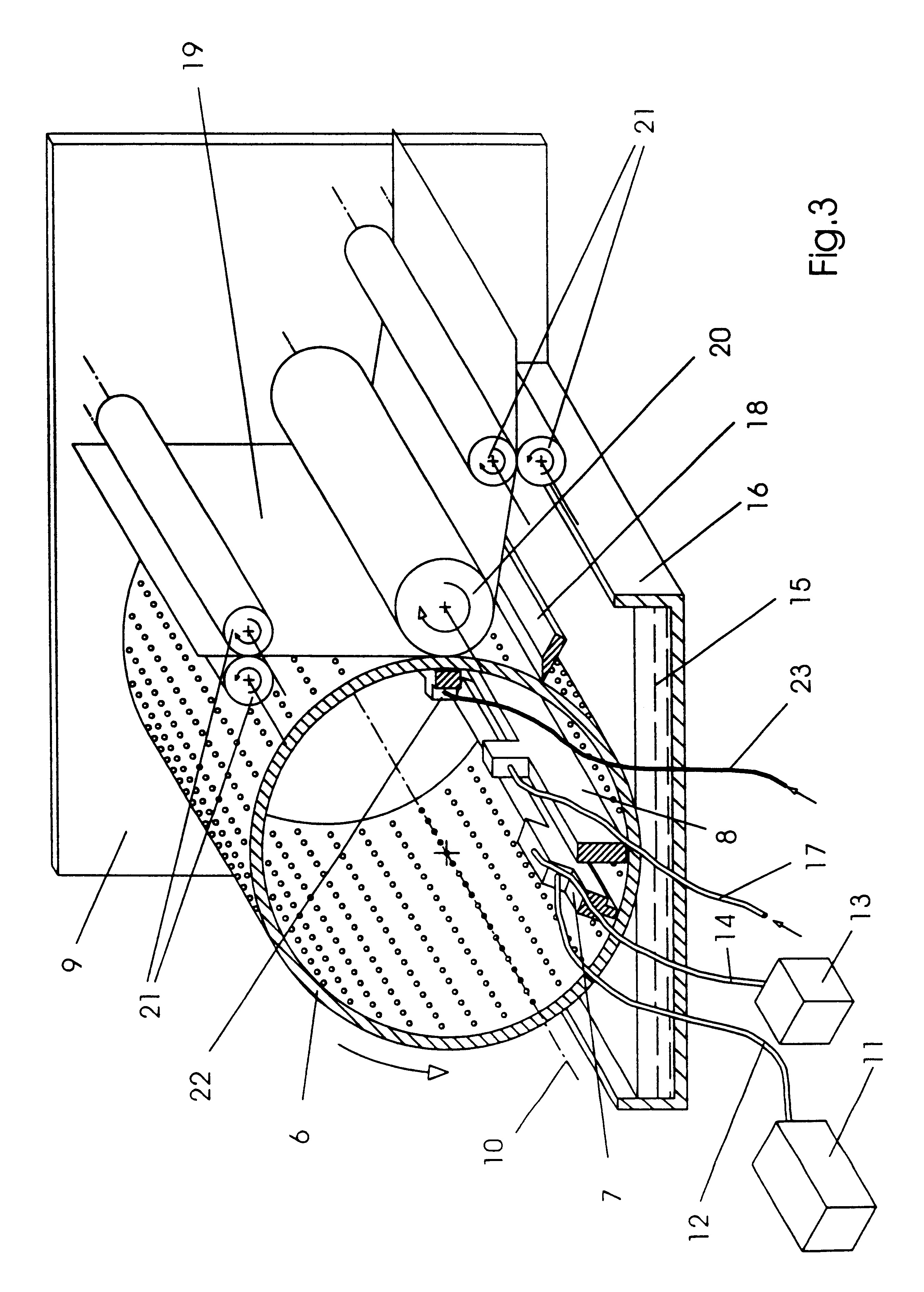Method, device and printing form for transferring free-flowing printing ink onto a printing material
a printing form and printing technology, applied in the field of printing forms and printing forms, can solve the problem that printed requires a new printing form, and achieve the effect of reducing expanding the volume of the cavity
- Summary
- Abstract
- Description
- Claims
- Application Information
AI Technical Summary
Benefits of technology
Problems solved by technology
Method used
Image
Examples
Embodiment Construction
Casein emulsion ink (black Plaka ink from the firm Pelikan) thinned with water in the ratio of one part of ink by volume with two parts of water by volume can be used as the printing ink. A printing form according to the invention for printing with this printing ink includes a square, 10-mm thick plate made of Teflon. The length of an edge of the plate is 50 mm. At right angles to the surface, identical through-holes are introduced into the Teflon plate. Down to a hole depth of 1 mm, the through-holes have a diameter of 0.4 mm. Thereafter, the hole diameter widens from 0.4 mm to the diameter 0.9 mm. The holes in the plate form a raster or screen with a hexagonal structure. Between the raster or screen points, there is a distance of 2 mm. Glass tubes are pushed into the openings in the through-holes having the larger diameters. One end of the individual glass tubes, respectively, is closed, and the glass tubes are pushed in with the open end in front. The glass tubes are 15 mm long, ...
PUM
| Property | Measurement | Unit |
|---|---|---|
| length | aaaaa | aaaaa |
| diameter | aaaaa | aaaaa |
| hole depth | aaaaa | aaaaa |
Abstract
Description
Claims
Application Information
 Login to View More
Login to View More - R&D
- Intellectual Property
- Life Sciences
- Materials
- Tech Scout
- Unparalleled Data Quality
- Higher Quality Content
- 60% Fewer Hallucinations
Browse by: Latest US Patents, China's latest patents, Technical Efficacy Thesaurus, Application Domain, Technology Topic, Popular Technical Reports.
© 2025 PatSnap. All rights reserved.Legal|Privacy policy|Modern Slavery Act Transparency Statement|Sitemap|About US| Contact US: help@patsnap.com



